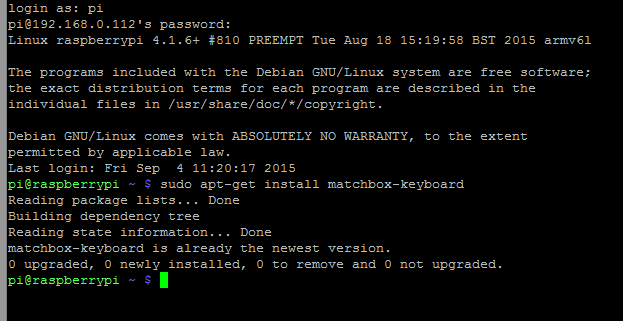

The instructions I found - which were to edit files or set configuration options - were rather cryptic, the sort that only make sense if you already know what to do. Using startx seems to require a run manager and one rdm (or something like that) seems to be installed. I had also googled the results gave me the impression that there were two ways to start an ide, the runlevel method and by running startx.

It seems to run everything but I suspect that it's running as root rather than as an official user.

Does it behave as it should (able to launch programs etc)? Or does it ask for login details when you attempt to launch anything from LXDE? It does seem odd that you are able to log straight into LXDE without giving credentials. The problem is though, all search results are from 2005-07, so I dont know if all this config is still nessecary/valid in Debian 6 Squeeze. 0 - Splunk 8 But I switched from a DM-DE combo to a startx-i3 combo.
#Startx on boot install
Default user for Raspbian OS is pi and the default password should be raspberry.I've been doing some googling, and I believe I need to install a login manager and change the runlevel to get the results i'm looking for. Masking and unmasking Systemd units Boot Delay 30min: systemd-analyze blame. startxwin is included in the xinit package (installed by following the instructions in the Section called Installing Cygwin/X in Chapter 2). When you are in the command line, log in with default user password (if you did not change it). Starting in multiwindow mode (startxwin) The custom XWin startup utility startxwin 1 starts the X server in multiwindow mode.

I did get startx to run on boot by adding sudo. Startx will work when I use a non-serialized connection (running from monitor) but i have to type into the command line. Installed EmmyLua language server for Emacs lsp-mode, worked like a charm. Installed lua-lsp language server, couldnt get it to work. OS type listed below Suddenly happened after unplugging frozen pi. Removed lua-language-server since it wasnt working properly with Emacs lsp-mode. Startx is not running on boot on my raspberry pi 3. If you faced the same situation and end up with just command line in Raspbian OS, no need to despair, it is very easy to set up Raspberry Pi to boot in GUI by default. Raspberry Pi startx not running on boot unless su is used. But since I did not pay attention in a hurry, I just tabbed finish on that screen. When you install Raspbian for the first time, it indeed present several option to configure for the first use. So how to you run Raspbian GUI then? Set up Raspbian GUI boot And thus when I booted in Raspberry Pi again, I landed in command line directly. Only thing which I missed at the first run was to set up the GUI. I did the same once again and installed Raspberry Pi once again.
#Startx on boot how to
I have previously written about how to install Raspbian OS on a SD card in Ubuntu. I always have to CTRL+ALT+F2 and sign in, then type 'startx' to enter the desktop. But you need to know how to configure startx to start the desktop or window. Since my Dell Ultrabook is in Dell service center (for weeks now), I started using Raspberry Pi once again as an alternative. In detail: Ive had some issues autostarting to startx at boot. You like to boot to the console and then run startx when you want an X session. Apart from the above, you will just need to use pacman. sudo start lightdm Note: Do not use startx or Ctrl+Alt+F7 For Ubuntu 15. Start x on login if -z DISPLAY & -e /tmp/.X11-unix/X0 then exec startx fi. It’s been some times since I bought Raspberry Pi but honestly, I hardly did anything with it. Then restart now the system will boot in to text console tty1.


 0 kommentar(er)
0 kommentar(er)
